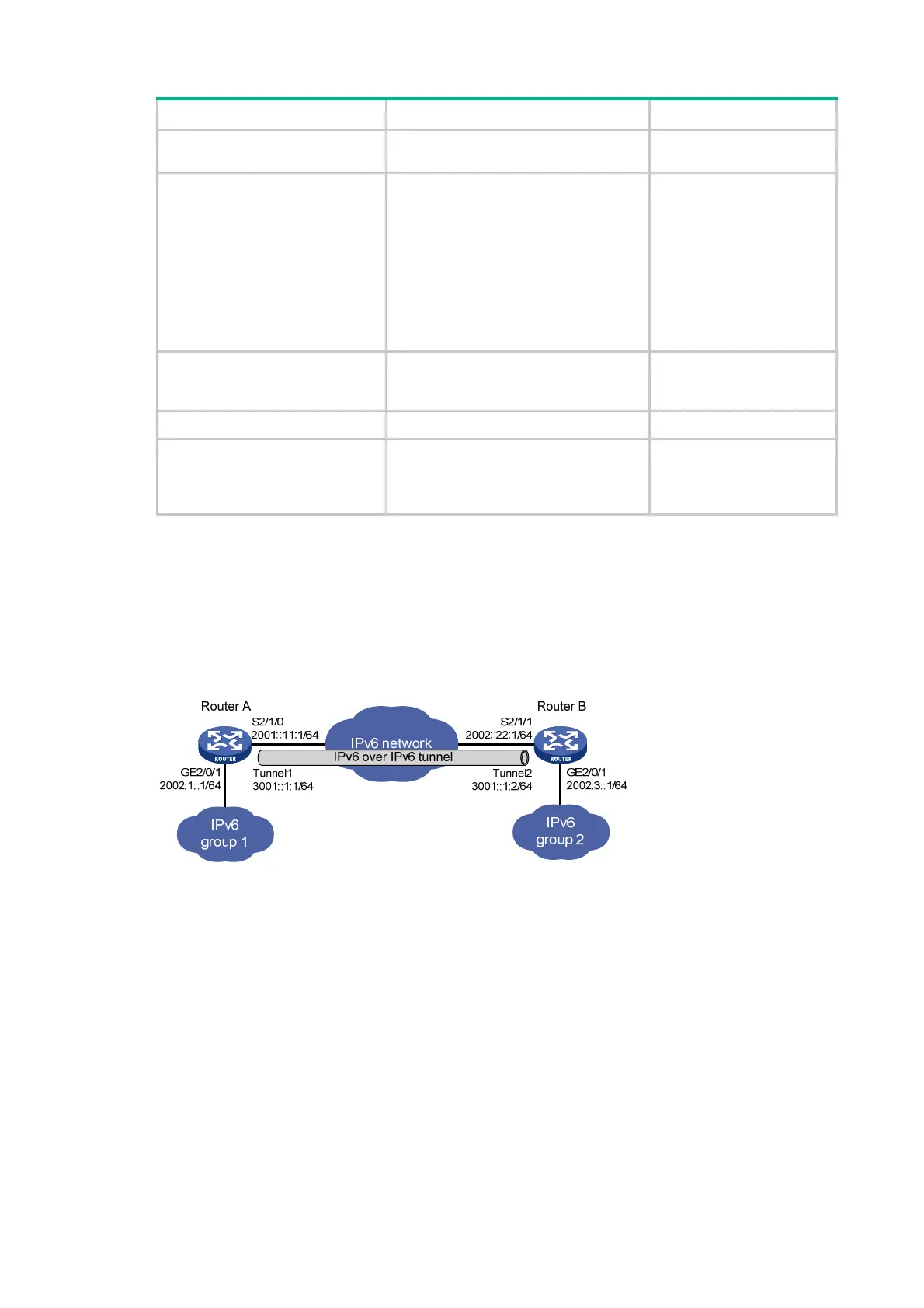340
Step Command Remarks
address of tunneled
packets.
5. Configure the destination
address for the tunnel
interface.
destination
ipv6-address
By default, no destination
address is configured for
the tunnel.
The tunnel destination
address must be the IPv6
address of the receiving
interface on the tunnel
peer. It is used as the
destination IPv6 address of
tunneled packets.
6. (Optional.) Set the maximum
number of nested
encapsulations of a packet.
encapsulation-limit
number
By default, there is no limit
to the nested
encapsulations of a packet.
7. Return to system view.
quit
N/A
8. (Optional.) Enable dropping
IPv6 packets that use
IPv4-compatible IPv6
addresses.
tunnel discard
ipv4-compatible-packet
By default, IPv6 packets
that use IPv4-compatible
IPv6 packets are not
dropped.
Configuration example
Network requirements
As shown in Figure 132, configure an IPv6 over IPv6 tunnel between Router A and Router B so the
two networks can reach each other without disclosing their IPv6 addresses.
Figure 132 Network diagram
Configuration procedure
Make sure Router A and Router B can reach each other through IPv6.
• Configure Router A:
# Specify an IPv6 address for GigabitEthernet 2/0/1.
<RouterA> system-view
[RouterA] interface gigabitethernet 2/0/1
[RouterA-GigabitEthernet2/0/1] ipv6 address 2002:1::1 64
[RouterA-GigabitEthernet2/0/1] quit
# Specify an IPv6 address for Serial 2/1/0, which is the physical interface of the tunnel.
[RouterA] interface serial 2/1/0
[RouterA-Serial2/1/0] ipv6 address 2001::11:1 64
